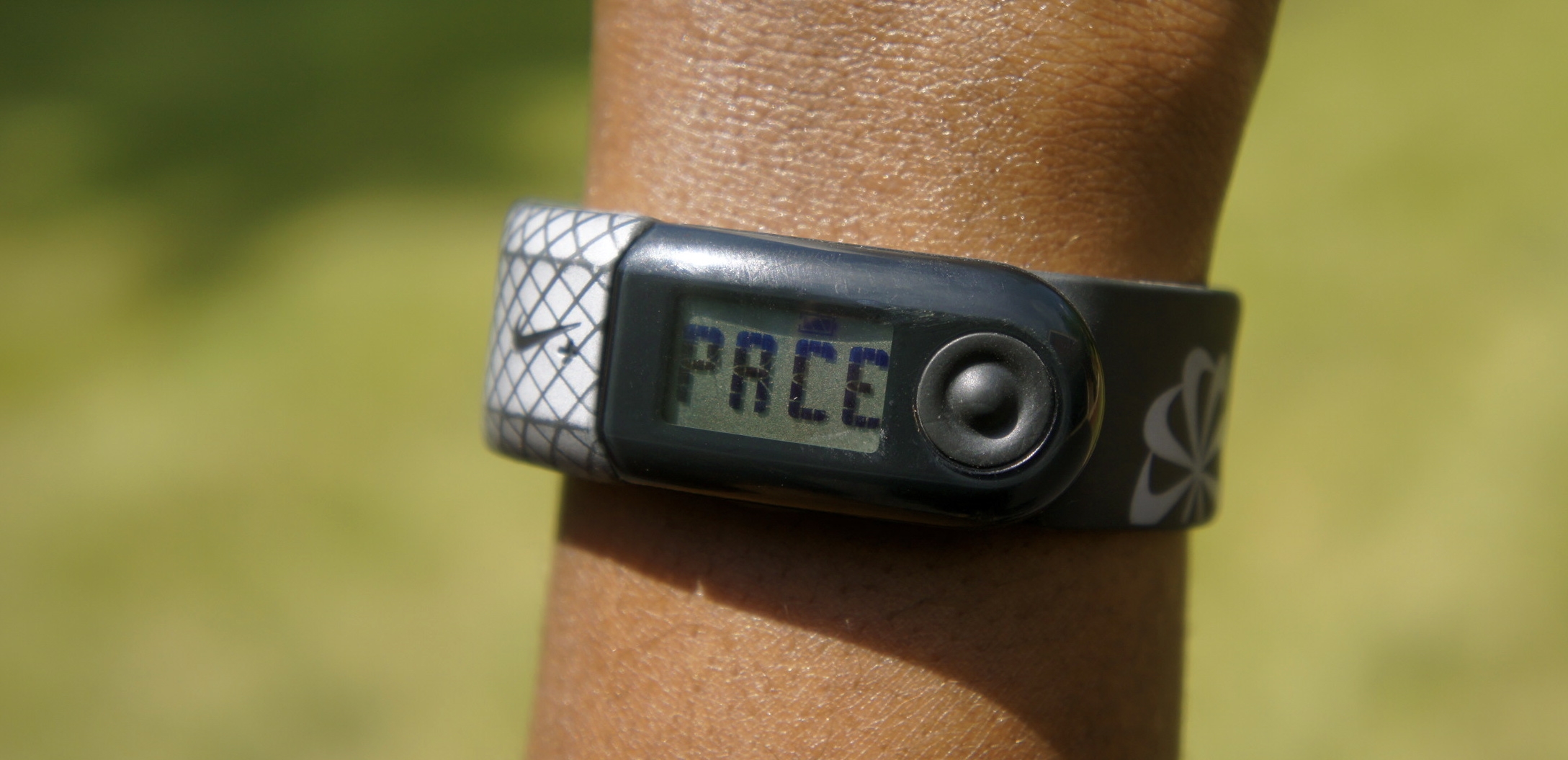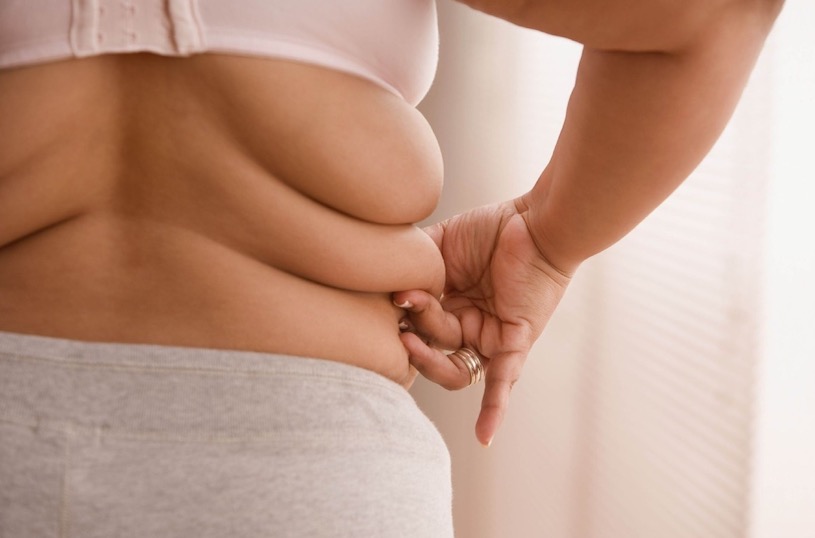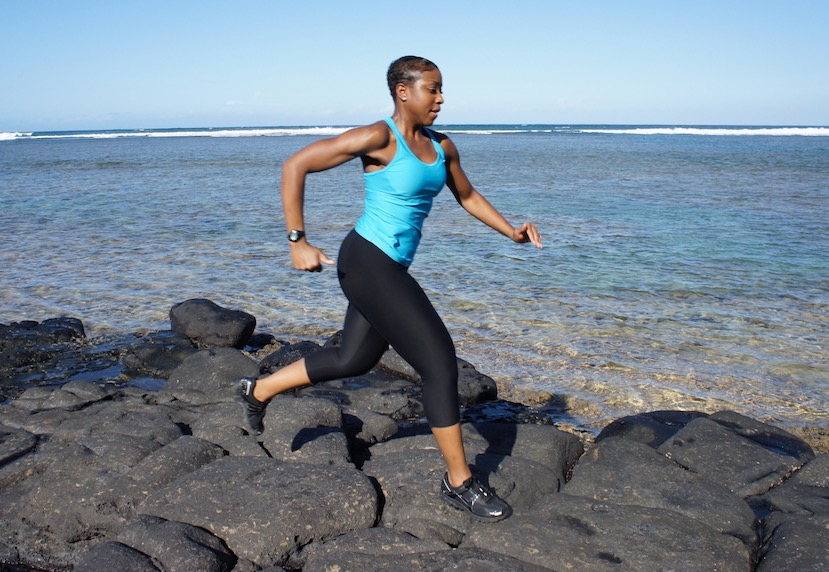If you regularly experience pain in your lower back, you’re certainly not alone. A large percentage of people experience low back pain and its onset tends to increase with age. There are two types of low back pain: Acute and chronic.
Acute low back pain is often associated with strenuous exercise or physical activity, overexertion, incorrect body stance and faulty posture. This type of low back pain comes on quickly and is profound but usually presents for a short period of time.
Chronic low back pain, on the other hand, continues in a repetitive manner. Any sort of motion can activate the pain and it stays relentlessly.
Understanding Low Back Pain
The lower back is the most mobile region of the spine allowing movements such as turning, twisting, and bending. It also plays a critical role during standing, walking, jumping, and lifting. The lower back is a complex structure of bones, ligaments, and muscles with major nerves and joints.
It connects the upper body (chest and arms) to the lower body (pelvis and legs) and is primarily comprised of vertebrae (bones of the spine) and intervertebral discs (cushions that sit between vertebrae) that bear much of the body’s weight.
Needless to say, the soundness of these structures and proper functioning of the lower back is necessary for almost all activities of daily living.
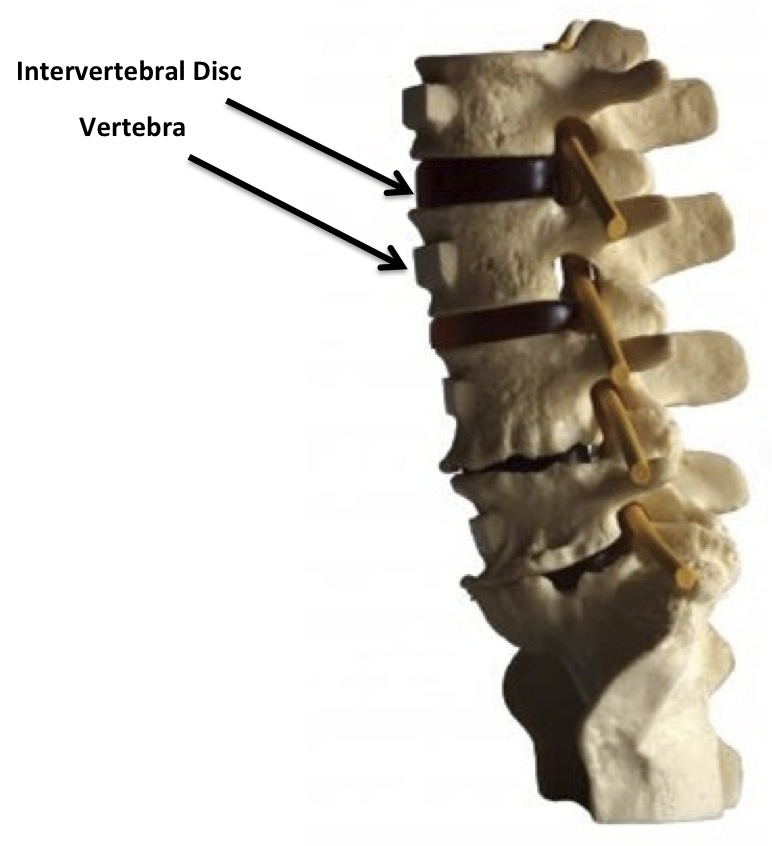
Unfortunately, many will experience some sort of low back pain in their lifetime because if the lower back is misused in any way, it can fail.
Disks can be ruptured, ligaments can sprain, and muscles can be strained.
Oftentimes such injuries are caused by accidents or sports related incidents, but, at times, routine and simple movements can result in low back pain.
Some of the major causes of chronic low back pain include: excess body fat, spinal fracture (broken back), rupturing or bulging discs along the spine, degenerative arthritis, hip problems, kidney disease, inflamed muscles or joints, tumors, or aneurysms.
Related Article: Major Conditions Associated with Low Back Pain
Exercise as a Treatment for Chronic Low Back Pain
If you suffer with low back pain it’s especially important to treat it. Low back pain can significantly restrict activity, lower work capacity, and reduce quality of life. Common treatments for low back pain include hydrotherapy (the use of ice and heat) and medications, which may include a combination of prescription drugs and over-the-counter remedies.
However, exercise is one of the most widely used treatments for low back pain. It is indeed one of the cheapest and most effective ways to prevent and speed recovery from this condition.
In severe cases, physical therapy may be necessary. But, with mild-to-moderate low back pain, it is possible to reduce symptoms by performing certain exercises targeted at maintaining and building joint flexibility, muscular strength and endurance. Here are some of them.
Exercises for Joint Flexibility
To decrease the intensity of low back pain, you can perform the following stretching exercises at home on a daily basis.
Single knee to chest stretch for your lower back muscles
- Lie on your back with both of your knees bent.
- Hold your thigh behind your knee and bring the knee up to your chest.
- Hold this position for 20 seconds, relax, and then repeat the stretch 5 times on each side.
Piriformis stretch for your lower back and hip muscles
- Lie on your back with both of your knees bent.
- Cross one of your legs on top of the other and pull the opposite knee to your chest until you feel a stretch in your buttock/hip area.
- Hold this position for 20 seconds, relax, and then repeat the stretch 5 times each side (demonstrated below).
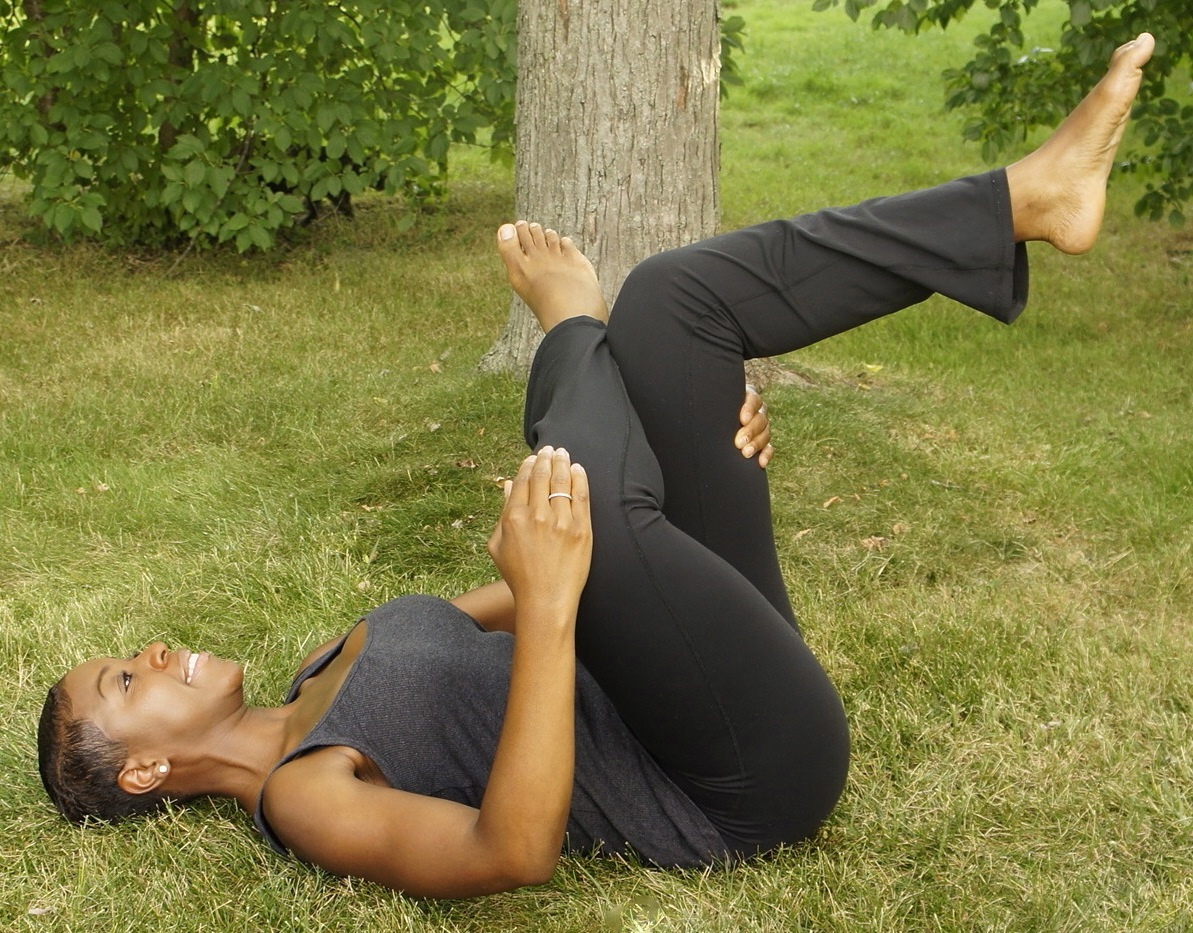
Hamstring stretch for the muscles in the back of your legs
- Lie on your back with your legs bent.
- One of your thighs should be held behind your knee.
- Slowly straighten your knee until you feel a stretch in the back of your thigh.
- Hold this position for 20 seconds, relax, and then repeat the stretch 5 times on each side.
Exercises for Muscular Strength and Endurance
To build muscular strength and endurance, you can perform the following exercises at home on three non-consecutive days per week.
Wall slide to strengthen your back, hip, and leg muscles
- Stand with your back against a wall and your feet shoulder-width apart.
- Slide down into a crouch with your knees bent to about 90 degrees.
- Count to 5 and slide back up the wall, and then repeat this movement 5-10 times.
Leg raise to strengthen your back and hip muscles
- Lie on your stomach.
- Tighten the muscles in one of your legs and raise it from the floor.
- Hold the leg up for a count of 10 and return it to the floor.
- Do the same with your other leg, and then continue to repeat this movement 5-10 times with each leg.
Leg raise to strengthen your abdominal and hip muscles
- Lie on your back with your arms at your sides.
- Lift one of your legs off the floor and hold the leg up for a count of 10 before returning it to the floor. Note: If that’s too difficult, keep one of your knees bent and the foot flat on the ground while raising your leg.
- Do the same with your other leg, and then continue to repeat this movement 5-10 times with each leg.
Partial sit-up to strengthen your abdominal muscles
- Lie on your back with your knees bent and your feet flat on the floor.
- Slowly raise your head and shoulders off the floor and reach with both hands toward your knees.
- Count to 10 before returning slowly, and then repeat this movement 5-10 times (demonstrated below).
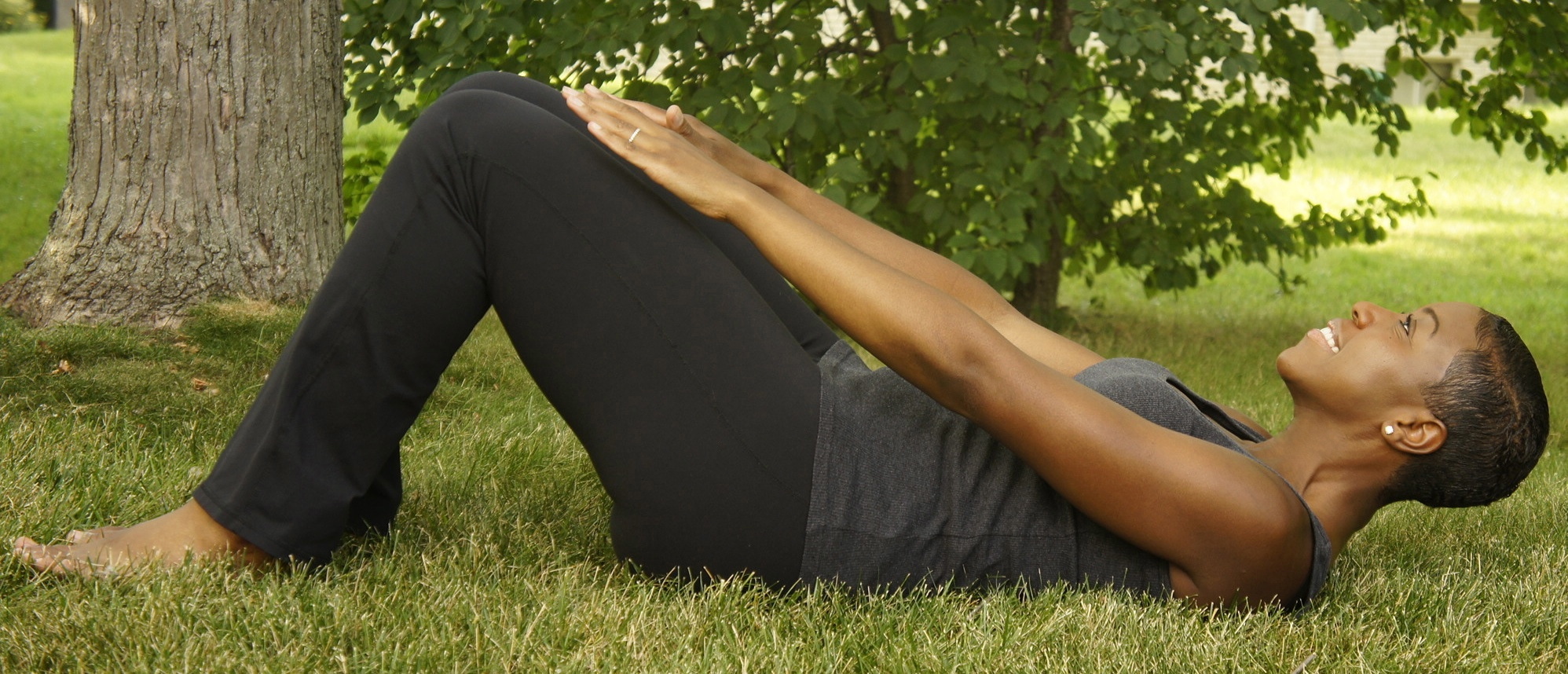
Back leg swing to strengthen your hip and back muscles
- Stand behind a chair with your hands on the back of the chair.
- Lift one of your legs back and up while keeping the knee straight.
- Return slowly and then raise your other leg and return slowly.
- Repeat this movement 5-10 times with each leg.
Lower back exercise to reduce strain
- Lie on your back with your knees bent and feet flat on a bed or floor.
- Raise your knees toward your chest.
- Place both of your hands under your knees and gently pull them as close to your chest as possible.
- Do not raise your head and do not straighten your legs as they are lowered.
- Start with 5-10 repetitions, several times throughout the day.
Low-Impact Cardiovascular Exercise for Muscular Endurance
When combined with the flexibility and resistance exercises I’ve described, low-impact cardiovascular (cardio) exercise can greatly minimize the symptoms associated with low back pain. Continuous cardio exercise that increases your heart rate over an extended period of time enhances the efficiency and functional capacity of your heart, lungs, and blood vessels.
This’ll ensure that your body is able to deliver the necessary oxygen and nutrients to your lower back. Such effects can lead to reductions in lower back stiffness and promote healing.
You can begin by performing 20-30 minutes of cardio exercise (in a gym or at home), at least 3 days per week with a goal of progressing to 40-60 minutes on most days of the week. Start with the following low-impact cardio exercises, which are gentle on the low back.
- Water activity (lap swimming, water walking and/or aqua aerobics)
- Treadmill or over ground walking
- Bicycling outdoors, stationary bicycling or “spinning”
Related Article: A Working Professional’s Guide to a Better Back
In summary, exercise plays an essential role in the treatment of low back pain. The goal is to minimize discomfort and restore your ability to perform normal movements and everyday activities efficiently and effectively.
Remember, if you’re experiencing mild-to-moderate low back pain, performing exercises for joint flexibility, muscular strength and endurance on a regular basis can significantly reduce symptoms.
However, if your low back pain is more severe, contact your healthcare provider for additional treatment options.
Learn More About Low Back Pain
At some point in time, almost everyone will experience low back pain as its prevalence greatly increases with age. To learn more about preventing and/or treating low back pain, visit The National Institute of Neurological Disorders and Stroke.



